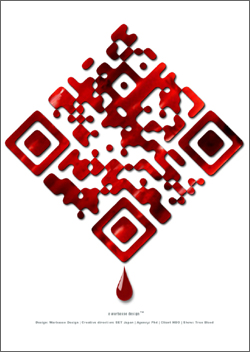Warbasse Design and Print2D team up to promote Chipotle's Boorito 2010
by Beth Silverstein
October 14, 2010 - Santa Monica, CA -- Warbasse Design & Print2D work together to bring Chipotle's vision for a healthier America to a mobile audience. A functional Designer QR Code introduces the mobile micro site to promote this years Boorito Costume Contest and healthy eating outreach campaign. "My design team and I eat at the 3rd Street Promenade - Chipotle every week," says Philip Warbasse CEO - Warbasse Design. "We love the quality at Chipotle and were happy to donate our expertise and services to a company that truly cares about the health of their patrons. My team really wanted to support this cause and I was all for it."
The QR Code is intricately designed with pattern fills and splashes of Autumn colors. Directions to download a reader are clearly displayed below the code.
The micro site contains a mobile streaming video that is served based on the user's device. The video is a fun look at Steve Ells and Jamie Oliver's shared interest in healthy eating. Those who wish to Tweet about, or post the video on Facebook can access links to both mobile social environments. The site also contains information about "the horrors of processed food", Jamie Oliver's Food Revolution, the Boorito costume contest and counting calories.
"This integrated Chipotle Boorito mobile campaign represents a fraction of what's possible in mobile marketing," continues Warbasse, "Chipotle is clearly ahead of the curve. They see what other brands will soon realize, that the challenge for advertisers today is to focus less on communicating to their audience and more on interacting with them."
###


